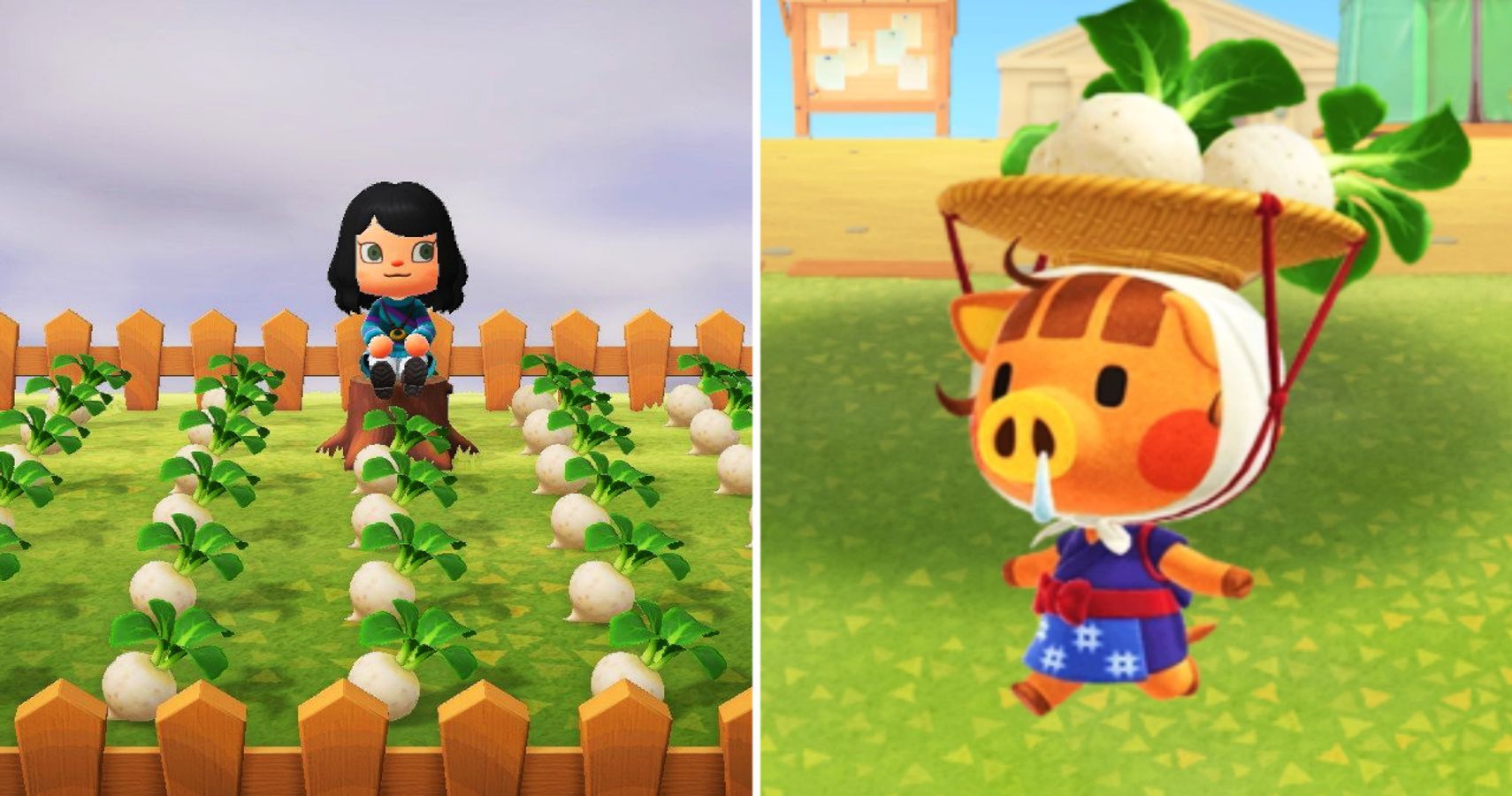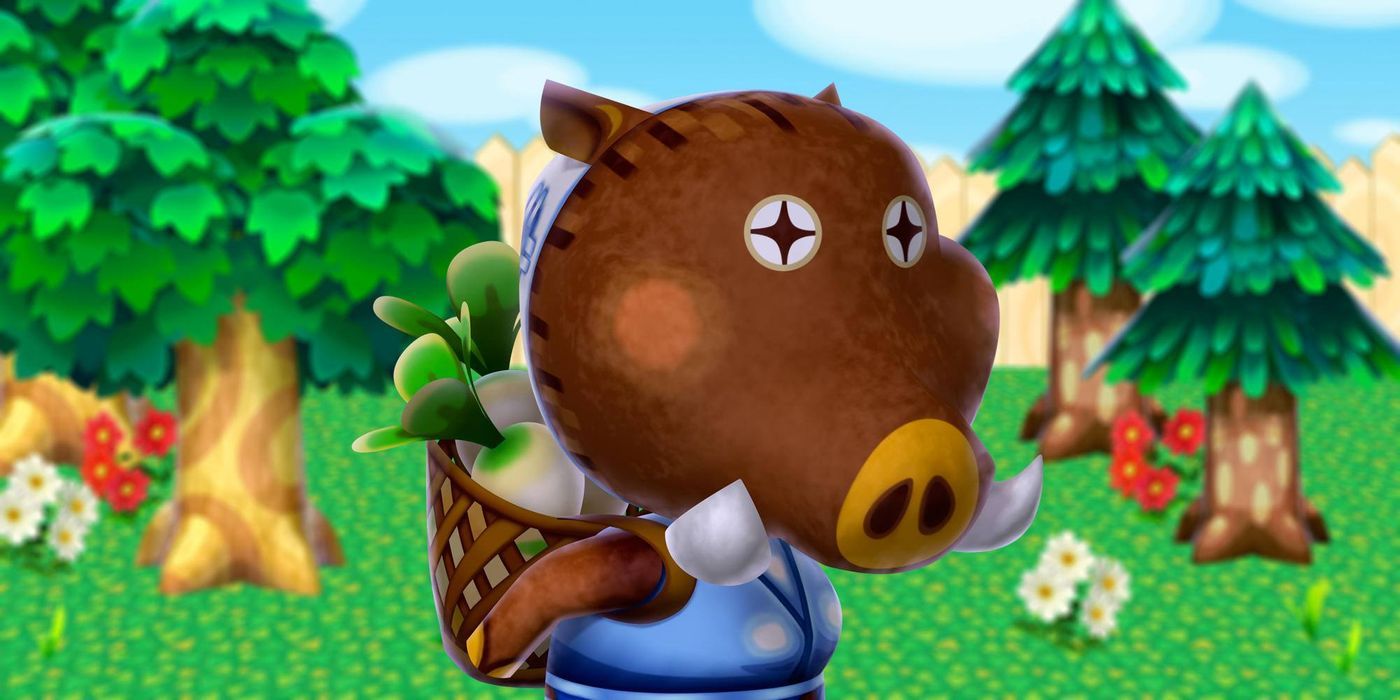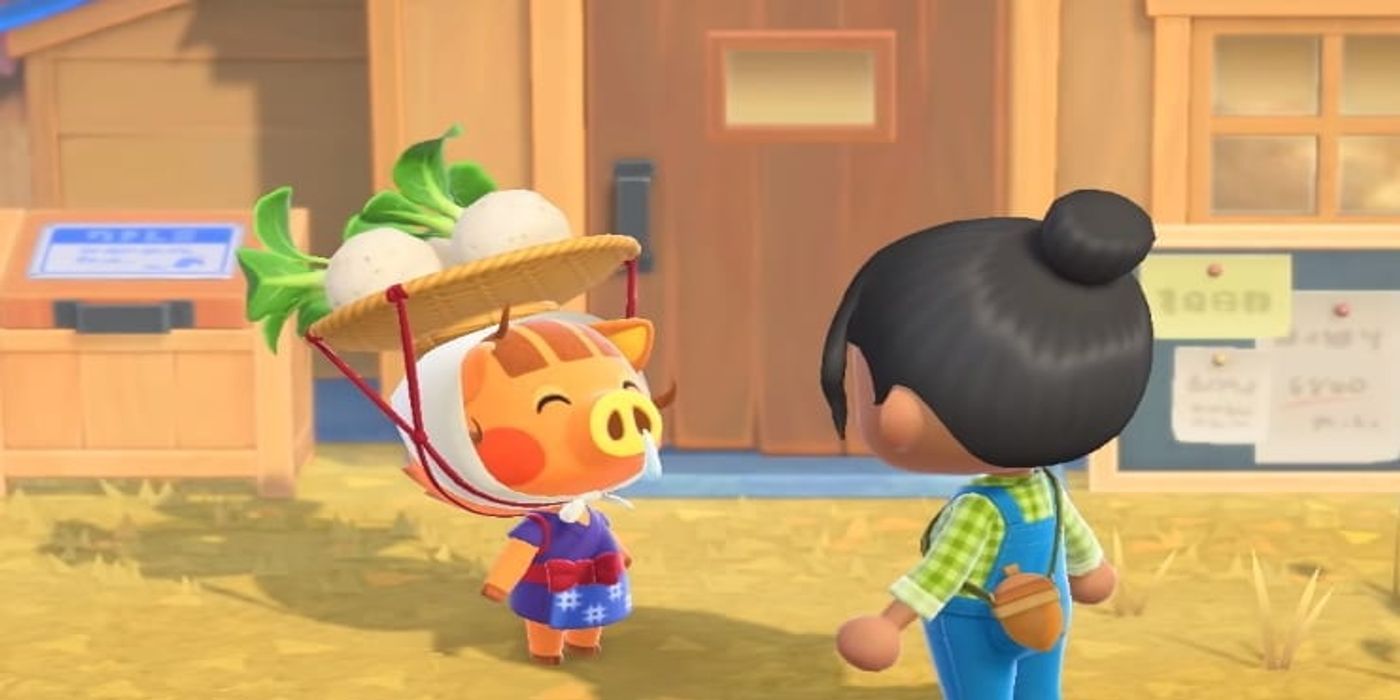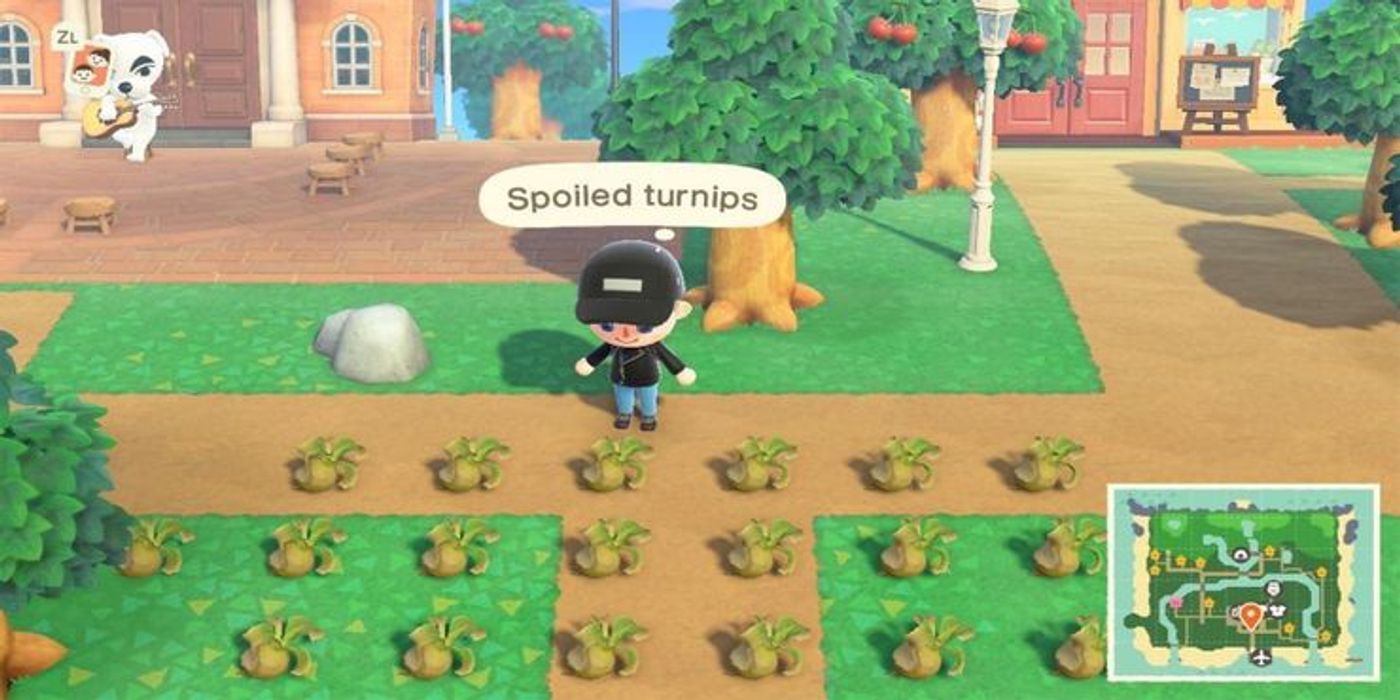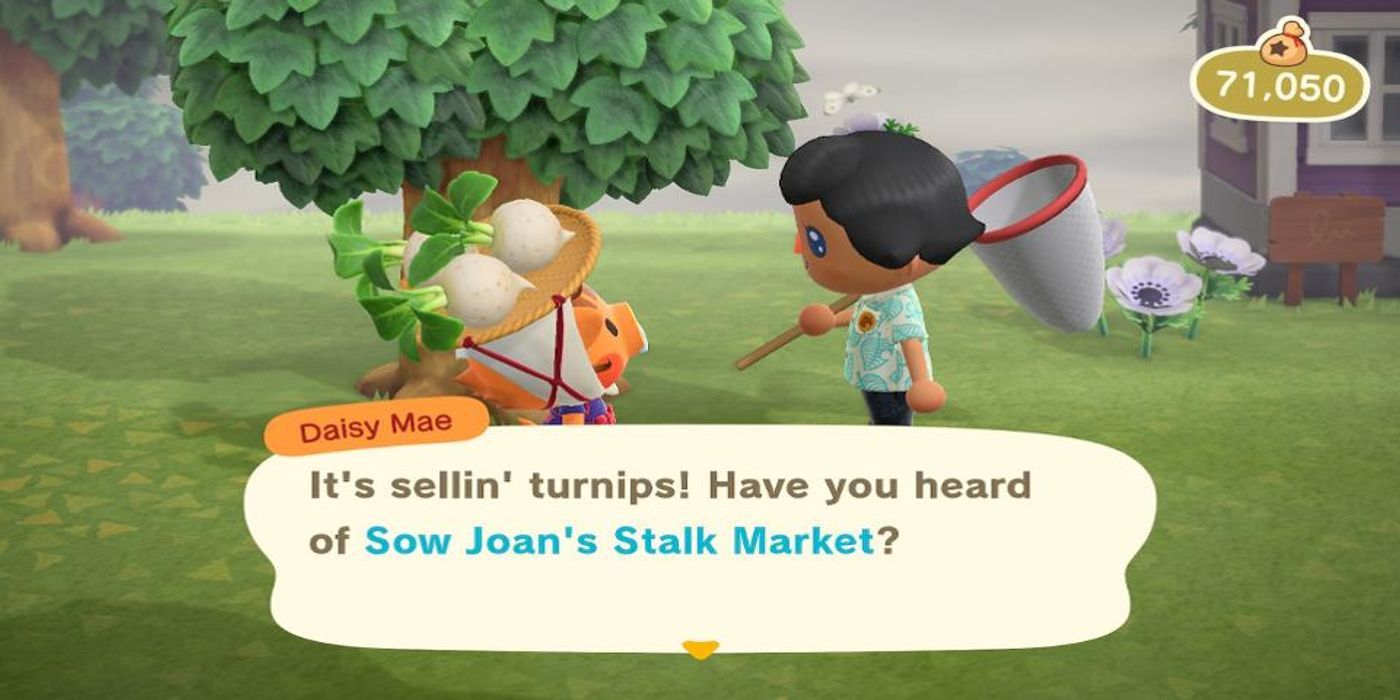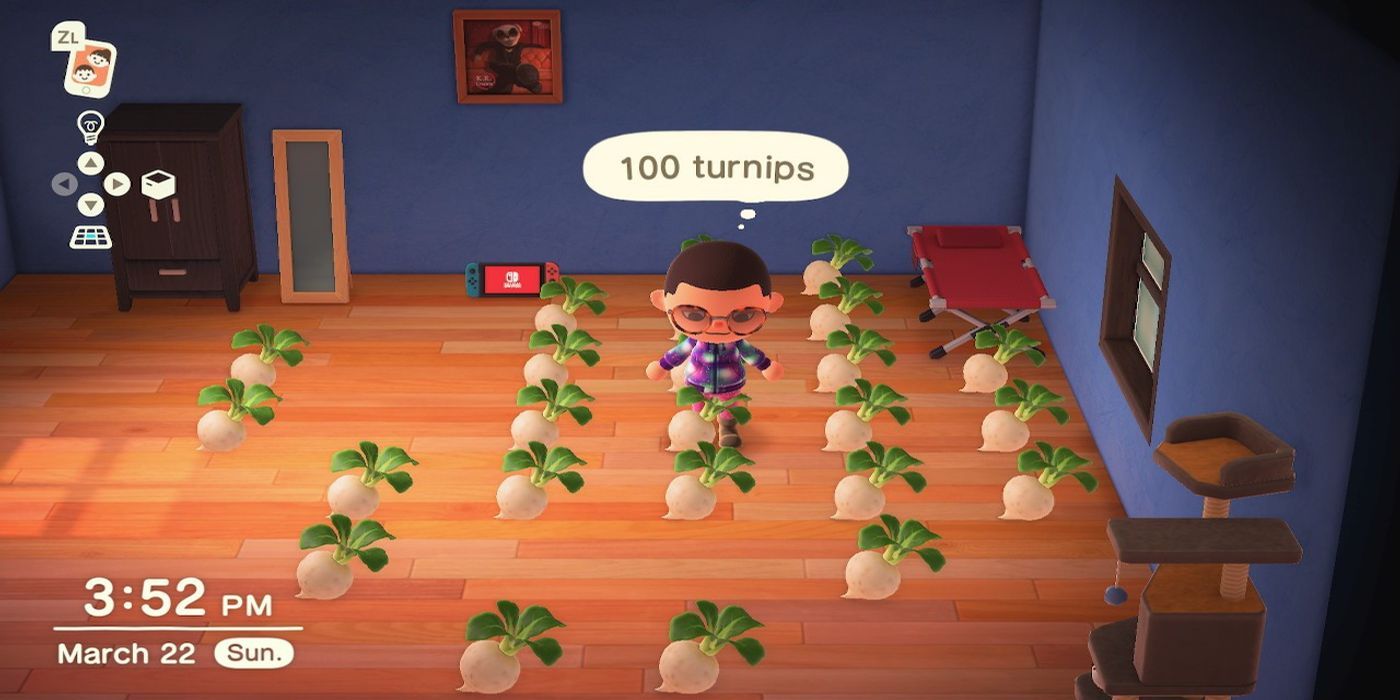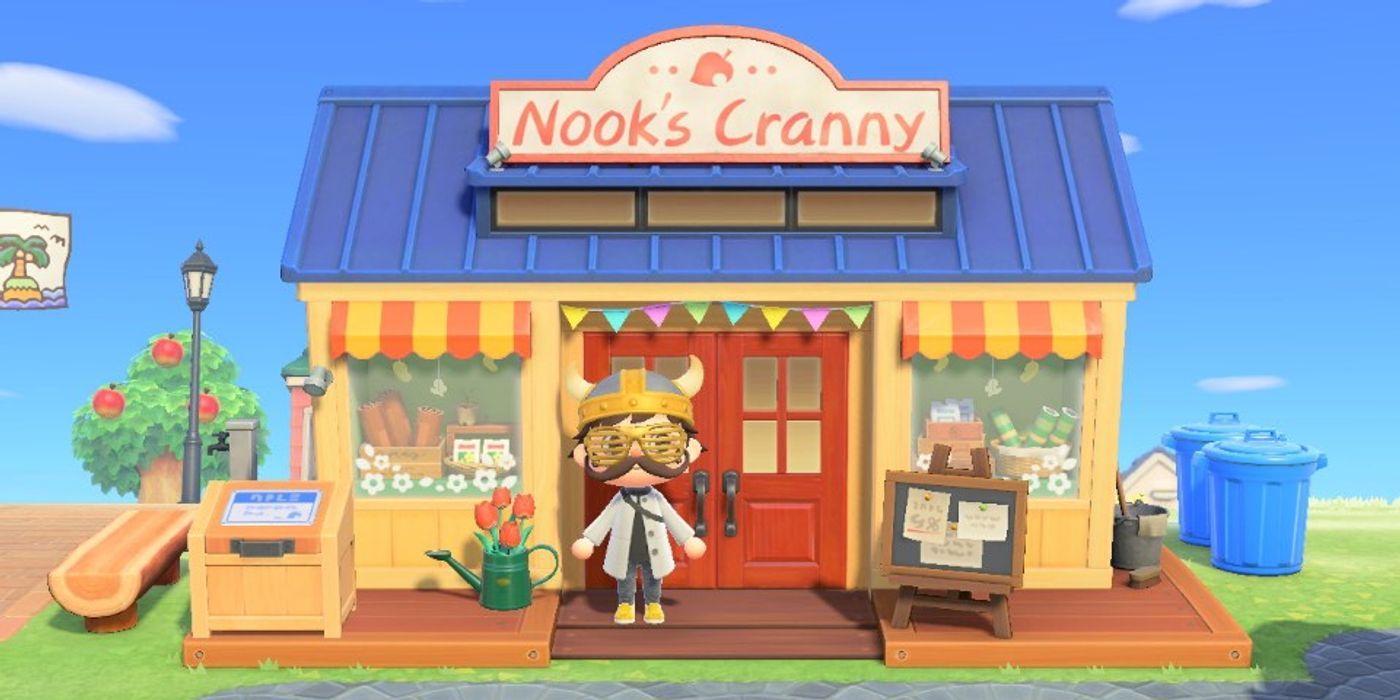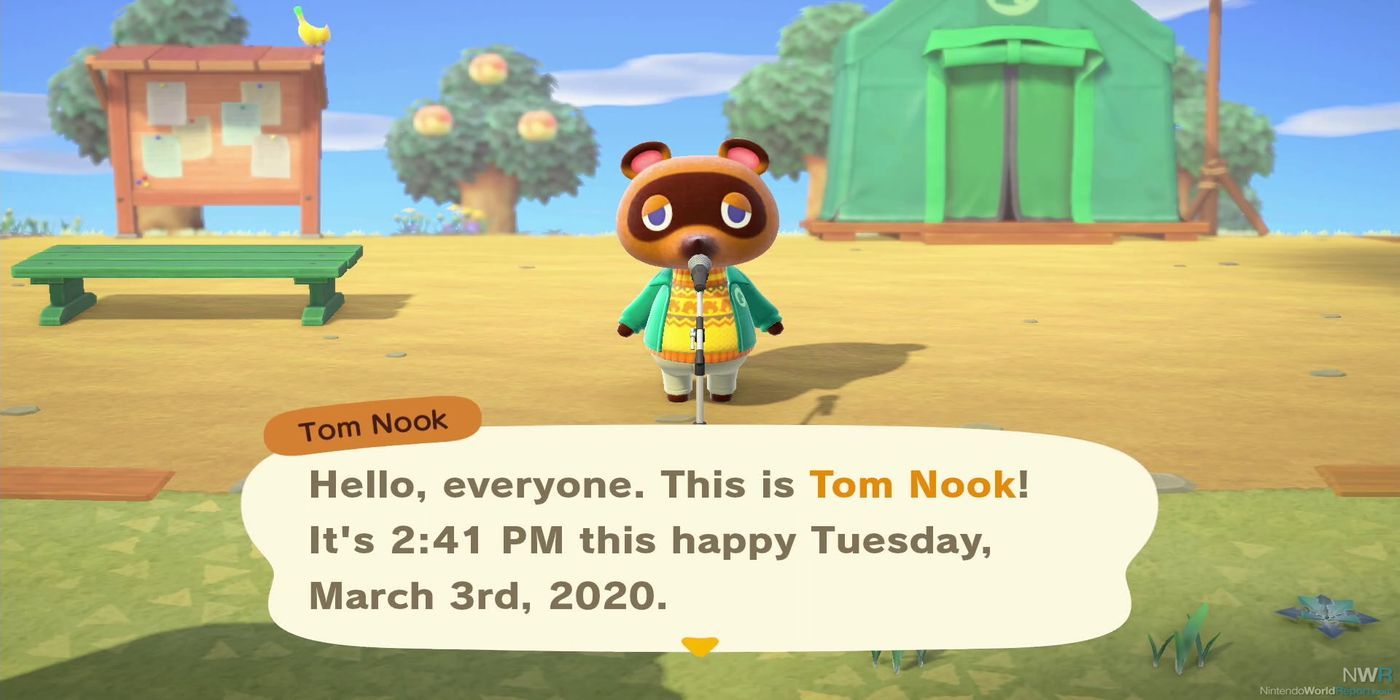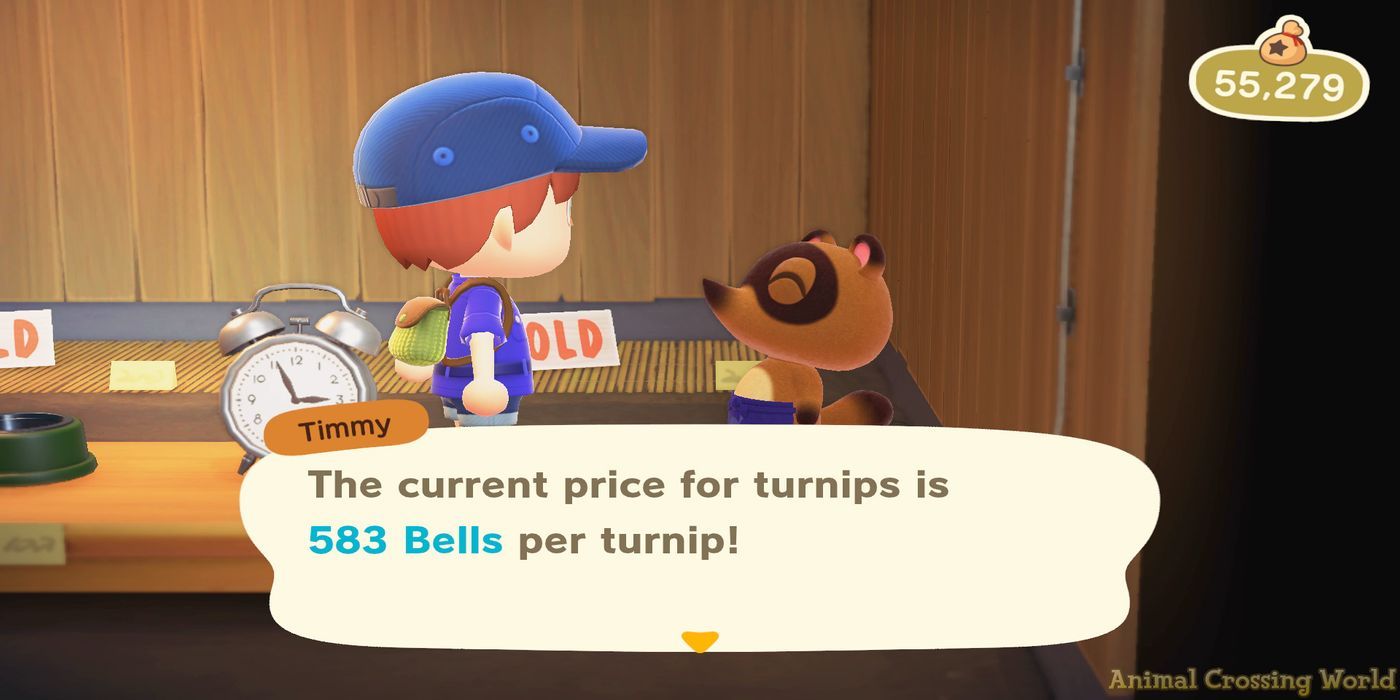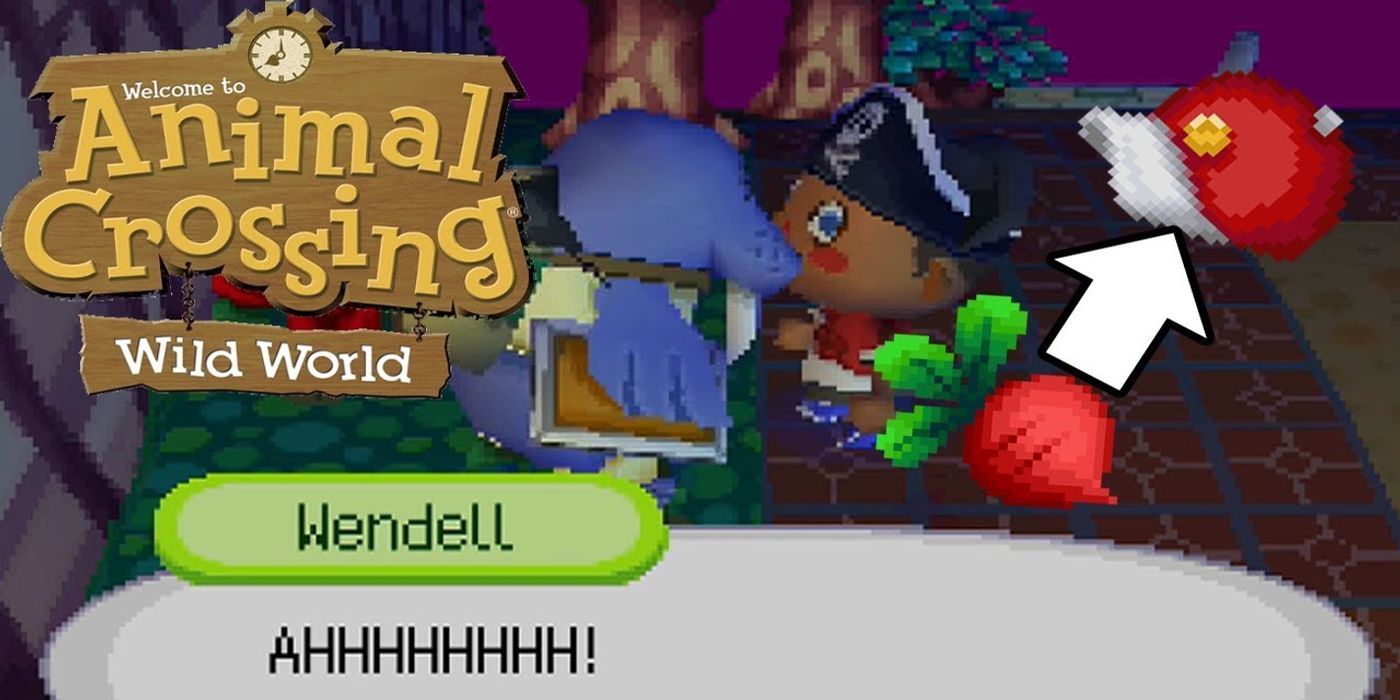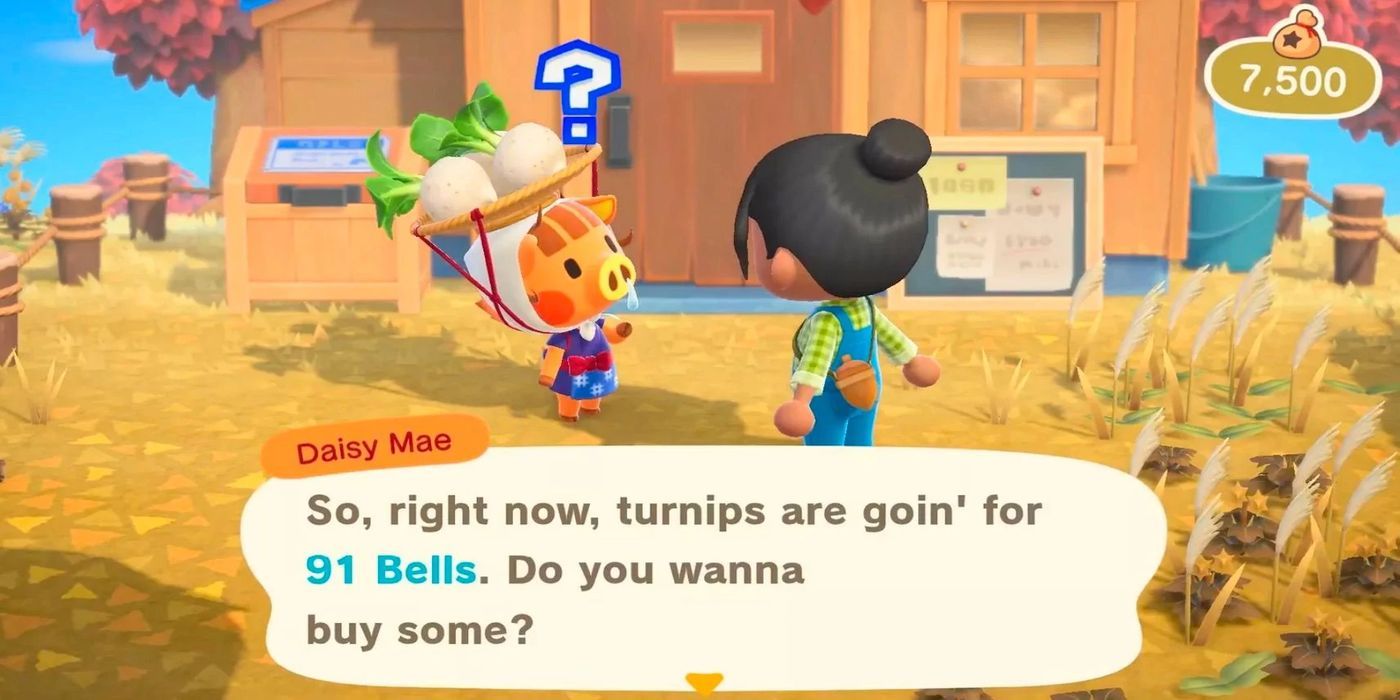Even in a game as relaxing as Animal Crossing: New Horizons, there's its own version of real-life investment, gambling and betting. The Stalk Market is the in-game version of the real-life stock market, a system that allows players to invest in turnips on Sundays for the coming week and potentially sell them at a much higher price.
Like with every investment, there are pros and cons. The pro is that even if the player fails to make a profit, they can still use the turnips for other purposes (or eat them). The con is that it's pretty random whether a profit is made or not. Here are a few important things to know about these fluctuating turnips.
10 The Sow Joan Reference
Animal Crossing loves its cool real life references, and the Stalk Market is a huge reference in itself. However, those who have only recently joined the Animal Crossing fanbase might not know that turnips were once sold by Joan, or "Sow Joan", Daisy Mae's grandmother.
This is of course a reference to the real like Dow Jones stock market index, a nice play on words that's been beautifully carried over.
9 Why It's Turnips
Out of all possible things that could be invested into, many players might be wondering why the developers decided it would be turnips of all items. The answer is rooted in the cultural background of Nintendo.
In Japanese, the word "kabu" when spoken out loud can mean both turnip, as well as stock. It can only be differentiated when written, since the kanji characters are different for both words.
8 The Only Food That Rots
So far, New Horizons has introduced a bunch of different fruits that the player can collect. Since cooking isn't going to be a thing just yet (but potentially in the future), these are basically the only food the player can eat to gain some force.
Even better, these foods never rot, unlike turnips which are infamous for rotting after one week. This is what makes them special, too. They have to be sold by the end of the week, or else.
7 The Stalk Market Obsession
There's no denying it: the Stalk Market isn't for every player, and that's fine. Maybe investments sound like too much trouble and anxiety to go through and maybe the player just wants a safe source of income.
However, hundreds upon hundreds of players are absolutely obsessed and consumed by the stalk market. So much so that there's actually a subreddit, multiple Discord servers and even an original website dedicated to it.
6 Price Patterns
While it might feel like the pricing is completely random, which it can be at times, there are actually a select few pricing patterns in the game that happen each week. These patterns also determine what might follow the week after.
The patterns include Random, Large Spike, Decreasing and Small Spike. Monitoring these changes twice a day can help the player understand what kind of trends will follow next week.
5 Other Markets
Let's say the player doesn't like the way their market is faring right now. Maybe they're experiencing a decreasing trend and invested a lot of money into turnips that week. Thankfully, instead of letting their turnips rot, they can turn to their friends for help.
The turnip market is different for every player, so each island will have its own daily prices in Nook's Cranny. This means it's more important than ever to communicate with fellow Animal Crossing fans to find out what their prices are.
4 Time Traveling
Many players use time traveling to play Animal Crossing, in order to get ahead in time and find out what different things will happen on their island at each given time. This can also be useful when it comes to turnips and the stalk market.
However, it's important to keep in mind that traveling backwards will immediately rot any turnips the player has bought. This was most likely done to avoid having players cheat weekly by returning to the day with the best price.
3 Nook's Pricing
As already mentioned, the price of the turnips changes every day, except for Sunday when Timmy and Tommy will refuse to buy any turnips. The price is set twice a day: once in the morning and once in the afternoon, so it's good to check twice during the day.
Prices have been reported to go as low as 9 bells per turnip to 660 bells per turnip, which is the absolute maximum price they can have.
2 Red Turnips
Although New Horizons has only introduced one kind of turnip, the white turnip, in previous games players have also had the pleasure of investing in red turnips. This variety involves more dedication and daily maintenance than white turnips.
Essentially, the player would purchase a red turnip and water it regularly. The longer it would grow, the higher its price would be. However, it required extremely regular maintenance, sort of like a long-term investment.
1 Base Price
Each week, when Daisy Mae comes out on Sunday to sell her turnips, the player can buy these vegetables for a base price. This price ranges anywhere from 90 bells to about 110 bells, which also determines the buy rate for them.
If the player bought the turnips for 110 bells each and the market surges with a 600% increase in price, they can sell those turnips for a whopping 660 bells per turnip. Not a bad price at all, but risky and rare!

